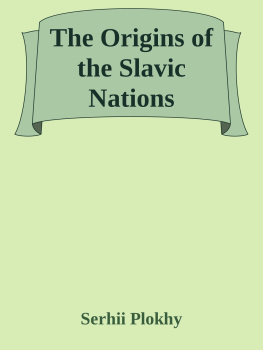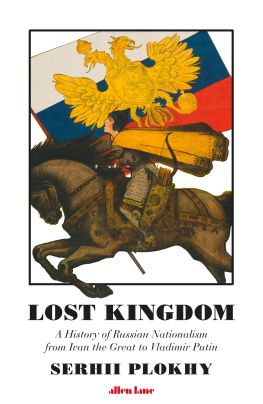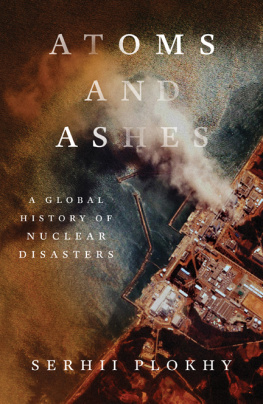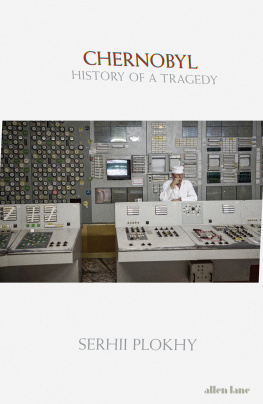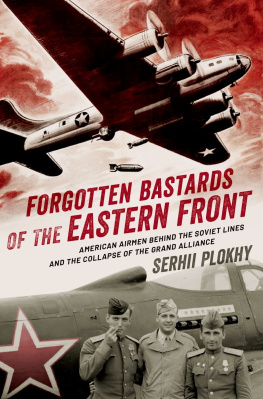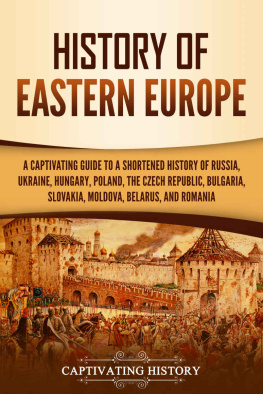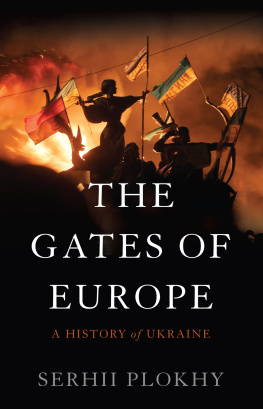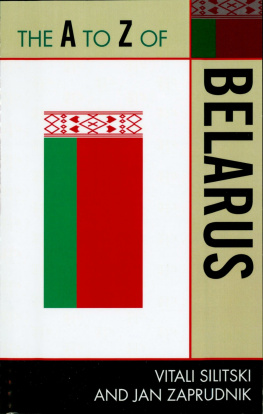The Origins of the Slavic Nations
The latest developments in the countries of eastern Europe, including the rise of authoritarian tendencies in Russia and Belarus, as well as the victory of the democratic Orange Revolution in Ukraine, pose important questions about the origins of the East Slavic nations and the essential similarities or differences between their cultures. This book traces the origins of the modern Russian, Ukrainian, and Belarusian nations by focusing on premodern forms of group identity among the Eastern Slavs. It also challenges attempts to nationalize the Rus past on behalf of existing national projects, laying the groundwork for a new understanding of the premodern history of Russia, Ukraine, and Belarus. The book covers the period from the Christianization of Kyivan Rus in the tenth century to the reign of Peter I and his eighteenth-century successors, by which time the idea of nationalism had begun to influence the thinking of East Slavic elites.
SERHII PLOKHY is Professor of History and associate director of the Peter Jacyk Centre at the University of Alberta. His numerous publications on Russian and Ukrainian history include The Cossacks and Religion in Early Modern Ukraine (2001), and Unmaking Imperial Russia: Mykhailo Hrushevsky and the Writing of Ukrainian History (2005).
The Origins of the Slavic Nations
Premodern Identities in Russia, Ukraine, and Belarus
Serhii Plokhy

CAMBRIDGE UNIVERSITY PRESS
Cambridge, New York, Melbourne, Madrid, Cape Town, Singapore, So Paulo
Cambridge University Press
The Edinburgh Building, Cambridge CB2 2RU, UK
Published in the United States of America by Cambridge University Press, New York
www.cambridge.org
Information on this title: www.cambridge.org/9780521864039
Cambridge University Press 2006
This publication is in copyright. Subject to statutory exception
and to the provisions of relevant collective licensing agreements,
no reproduction of any part may take place without
the written permission of Cambridge University Press.
First published in print format 2006
ISBN-13 978-0-511-25104-7 mobipocket
ISBN-10 0-511-25104-1 mobipocket
ISBN-13 978-0-521-86403-9 hardback
ISBN-10 0-521-86403-8 hardback
Cambridge University Press has no responsibility for the persistence or accuracy of URLs for external or third-party internet websites referred to in this book, and does not guarantee that any content on such websites is, or will remain, accurate or appropriate.
To Maryna
Preface
I did not intend to write this book. I was working on another project pertaining to modern history when questions related to the premodern identities of the Eastern Slavs slowly but surely took over most of my time and attention. Looking at the major modern narratives of East Slavic history, I suddenly realized that perceptions of the premodern Russians, Ukrainians, and Belarusians, both in their homelands and in the West, are still shaped by the views of national historians and the paradigms they created. While historians studying individual periods and topics of East Slavic history have made significant progress over the past century, the main national paradigms have survived both Soviet repression and the emigration of the bearers of national historiographic traditions to the West. Since the fall of the USSR, those paradigms have reappeared in the East Slavic lands and even blossomed on the ruins of Soviet historiography.
Has anybody done better since the Depression? asked the wife of an acquaintance of mine who was preparing a talk on the Ukrainian national historian, Mykhailo Hrushevsky (18661934). Well, frankly, no, was the answer he gave. I asked myself the same question, broadening its range from Hrushevsky to the entire field of Russian, Ukrainian, and Belarusian historiography. I also had to extend the chronological scope of the question, starting not with the Depression but with the Russo-Japanese War of 19045 and the Revolution of 1905 in the Russian Empire. It was then that Hrushevsky published the first twentieth-century outline of Ukrainian history; the patriarch of Russian historiography, Vasilii Kliu-chevsky, began to issue his Survey of Russian History ; and Belarusian national historiography began to emerge from the shell of Russian imperial history. The answer to my question was equally negative. In the last hundred years, no one had done it better, nor had any approach to the nationalization of the past improved significantly on the achievements of those two outstanding scholars. In the end, I could not resist the urge to take a fresh look at the dominant versions of premodern Russian, Ukrainian, and Belarusian history and try to denationalize and update them according to the standards of contemporary historical scholarship. In order to do so, it turns out, I had to write this book.
I could not have written it without the support offered me (intentionally or not) by many individuals and institutions at times they, too, were under the impression that I was working on a different project altogether. I would like to offer individual thanks to those who helped me most. My special thanks go to Myroslav Yurkevich for his support, tactful advice, and thorough editing of my Ukrainglish prose. Advice from Roman Szporluk, Blair Ruble, Terry Martin, and Timothy Snyder was instrumental in shaping the scope of this book and my analytical approach. So were the comments of Volodymyr Kulyk, who, for good reason, advised me against writing this work. I am also grateful to Frank E. Sysyn and Zenon E. Kohut for sharing their insights on the history of early modern Ukrainian texts and identities, as well as books and copies of articles from their personal libraries. Also very helpful were discussions with Natalia Yakovenko, Charles J. Halperin, Michael S. Flier, and Edward L. Keenan on early modern Russian and Ukrainian identities. Paul Bushkovitch, Simon Franklin, Valerie Kivelson, Don Ostrowski, Oleksii Tolochko, Olena Rusyna, and Michael Moser read individual chapters of the book and gave me excellent advice on how to improve them. I would also like to thank participants in the Workshop on Cultural Identities at the University of Alberta John-Paul Himka, Jelena Pogosjan, Natalia Pylypiuk, Oleh Ilnytzkyj, Heather Coleman, and Peter Rolland for their comments on chapters originally presented at meetings of the workshop. Parts of chapters originally appeared in my article The Two Russias of Teofan Prokopovy, published in Mazepa e il suo tempo. Storia, cultura, societ / Mazepa and His Time: History, Culture, Society (Alessandria, 2004), pp. 33466. I thank Giovanna Brogi Bercoff for her advice on the content of the article and the editor of the volume, Giovanna Siedina, for permission to reprint parts of it in this book.
I am also greatly indebted to participants in the Humanities Program of the American Council of Learned Societies in Belarus, Russia, and Ukraine, especially to the members of the Carnegie Selection Committee with whom I was privileged to work in 20036: Andrzej Tymowski, William Rosenberg, Joan Neuberger, and administrative assistant Olga Bukhina. My work in the program gave me a unique opportunity to meet with leading Russian, Ukrainian, and Belarusian scholars working on topics closely related to the subject of this book. My research was sponsored by a grant from the Ukrainian Studies Fund, Inc. (New York), and I would like to express my deep appreciation to the director of the Fund, Roman Procyk, for supporting this project. I thank Michael Watson, commissioning editor for history at Cambridge University Press, for guiding the manuscript through the review and acceptance process. At CUP my thanks also go to Isabelle Dambricourt, Jackie Warren, and Jacqueline French for their help with the editing of the manuscript. I am also grateful to the two anonymous reviewers of the book, whose suggestions I took into account in preparing the final version of the manuscript. I would also like to acknowledge the kind assistance of Viktor Brekhunenko, who helped me with copyright issues in Ukraine. As always, I thank Peter Matilainen for his help in solving computer problems. My special thanks go to my family in Canada and Ukraine.

